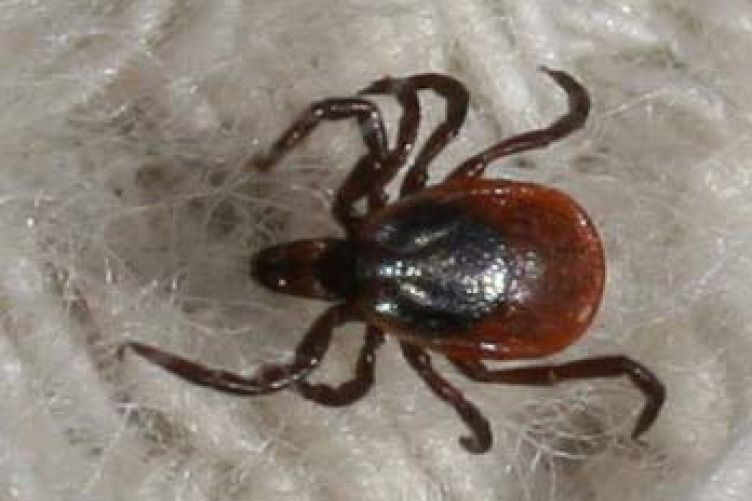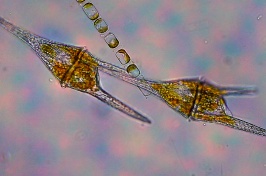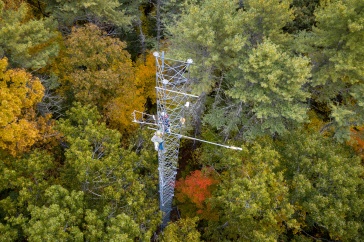
New Hampshire’s long, snowy winter was great for black-legged ticks, which transmit Lyme disease. Cooperative Extension entomologist Alan Eaton gives tips on staying safe.
Alan Eaton has one word of advice for Granite Staters hoping to escape the state’s top-in-the-nation incidence of Lyme disease this year: Move.
Eaton, UNH Cooperative Extension specialist and professor of entomology, is only partly joking. He says that the deep, long snow cover this winter is making for a banner tick season. That’s because ticks—in particular the black-legged tick that transmits Lyme disease—thrive beneath snow’s cozy wet blanket of constant humidity.
“They’re really flat critters,” says Eaton, who has been surveying the state’s tick population for two decades. “If it’s dry for too long, they dry out. They can handle freezing no problem.”
The next few weeks, when the poppy seed-sized nymphs are active, present the highest risk for Lyme disease and its lesser-known cousins, anaplasmosis and babesiosis. Not only are the nymphs smaller and harder to spot, but they can transmit Lyme disease in just 24 hours of feeding on a host (that’s us), compared to 36 hours for an adult tick.
Eaton, who teaches entomology and oversees Cooperative Extension’s integrated pest management program, has been surveying the state for ticks for more than two decades. With a white cotton bath towel attached to a broomstick like a flag, he conducts “tick drags” around the state. Ticks that are “questing”—waiting on vegetation for a host to present the opportunity for a meal—mistake his flag for a warm-blooded snack and grab on; he stops, counts, and logs their plentitude.
In New Hampshire, more black-legged ticks (Ixodes scapularis, formerly known as deer ticks) call Rockingham, Strafford, and Hillsborough counties home than the rest of the state, by a long shot. Eaton suspects that the proximity of those counties to his UNH office may present a slight bias, but the abundance is more likely due to increased humidity along the coast or rivers, more deer, and more people.
“The more humans there are in a certain area, the more hosts,” he says. Higher population also leads to a higher reporting of Lyme disease.
So should Granite Staters take Eaton’s tongue-in-cheek advice and leave town? There are far easier ways to protect yourself from ticks and the diseases they carry, he says. Insecticides and pruning brush limit the ticks you’re likely to encounter, and tucking long pants into tall socks keeps the arachnids away from you and your tasty blood.
And since a tick must feed on you for at least 24 hours to transmit disease, checking for and removing ticks daily prevents them from spreading Lyme disease. This low-tech approach is the one Eaton advocates to strip New Hampshire of its dubious most-Lyme-disease distinction.
“It doesn’t cost money,” he says. “It takes a little bit of time, but if a high percentage of residents and visitors did that, our rates would plummet.”
-
Written By:
Bridget Finnegan | Communications and Public Affairs | bridget.finnegan@unh.edu | 603-862-1465



















































